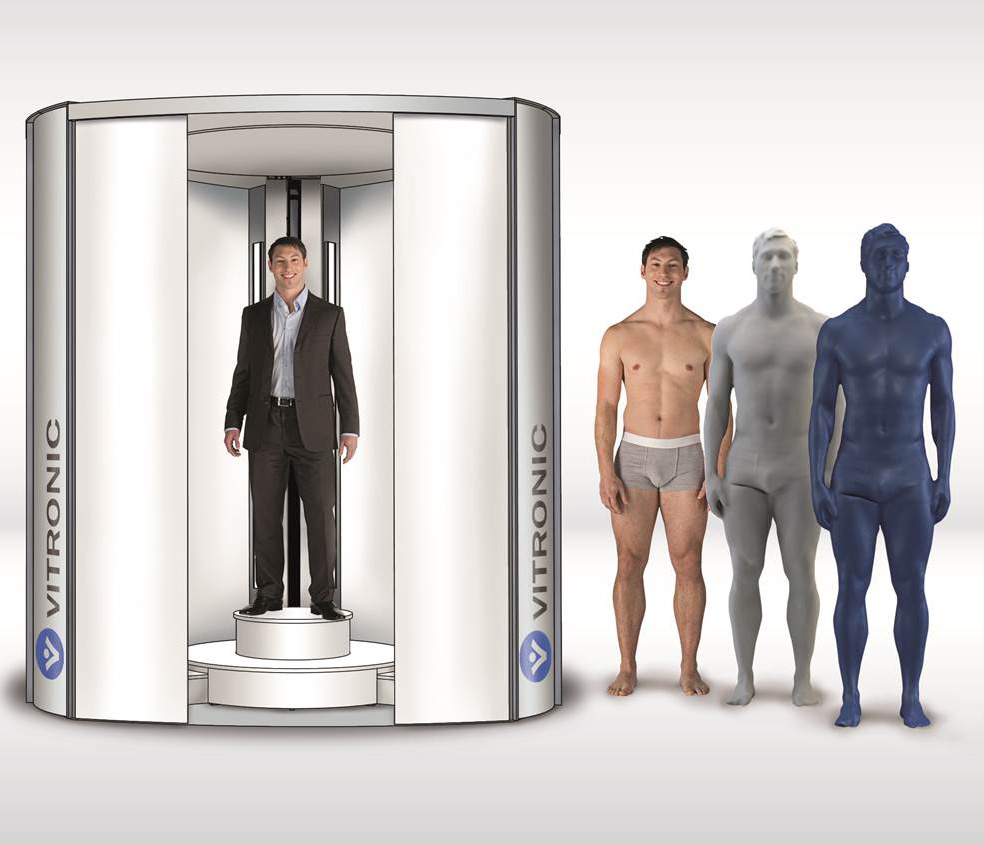
Ideal Physique Desired with 3-D Imaging
Many people dedicated to consistent exercise find themselves frustrated when their efforts don’t translate into results. It can feel like the discipline required to achieve a great physique isn’t worth the time going into it.
A trainee’s frustration may start to build when their expectations aren’t met, but most likely none of those expectations were properly established. Most new weightlifters never create a vision of what they would like to look like, they absent-mindedly attempt to reach “ideal” numbers.
For example, someone looking to trim down their physique will tell their trainer a number of pounds or kilograms they want to lose. A skinny guy will disclose that they want to increase their weight by a certain amount.
Numbers are thrown around, but the baseline of what that goal should look like is never discussed. Without an image of your ideal physique, the expectation of a training program becomes a never ending journey.
To help personal training clients set more fitting goals, many sports clubs and studios are utilizing 3-D imagery technology into their workout packages. For individuals who exercise regularly, this comes as a great advantage to save years of wasted effort by customizing your training to meet your expectations.
How 3-D Imaging Technology is Changing the Fitness Industry

As many experienced bodybuilders will tell you, starting a training program without a journal of your results is just an absolute waste of time. This includes records of both nutrition logs and months of progressive workouts (see Why You Need a Training Log When Working Out).
The purpose of the log is for the trainee (or the trainer) to form a proper self-evaluation of their strengths and weaknesses and make small improvements over time. The numbers collected from the logs should show patterns of progression, stagnation or a plateau, and regression.
The magic of 3-D imaging is that these numbers can be interpreted and uploaded to a computer or smartphone device to give you a better visual of your current fitness condition.
When you gather measurements for your waist for example, a tape measurement can be used, however, the margin of error for inaccuracy increases depending on the expansion of your stomach and where the tape was placed.
Studies evaluating obese individuals recently found that 3-D imaging scanners provided more accurate methods of calculating body shape and composition.
So, why has 3-D body imaging finally reached the mass consumer through the personal training industry?
Standards have been changing slowly over the years and the losing weight dogma is starting to become repetitive and invalid. Aiming to lose weight creates more cyclical changes that create more weight gain than fat loss.
Body composition has taken precedent over body mass regulation, and clubs have responded with scanning technology that can make fitness more stimulating for clients. Displaying small incremental improvements in the physique of an active individual encourages motivation and enthusiasm during a workout program.
This combined with the declining costs of scanning devices has created new standards for the personal training industry in the 21st century.
The Wrap Up
3-D imaging creates a visual in the mind of clients looking to make significant improvements to their physiques over time. Imaging helps convert complex anatomical data into a picture of the ideal body they would like to attain with an effective training and nutrition program. Visuals can be highly valuable for clients to remain engaged and motivated while learning more about their personal fitness.

Leave a Reply
You must be logged in to post a comment.